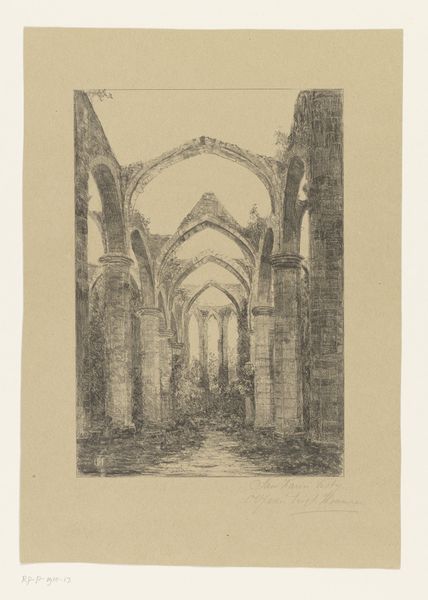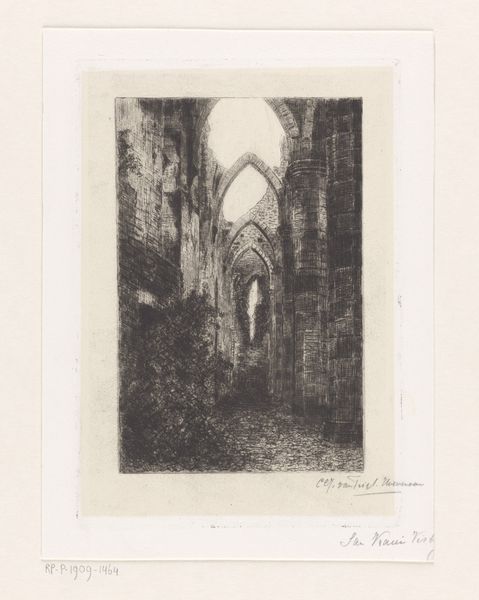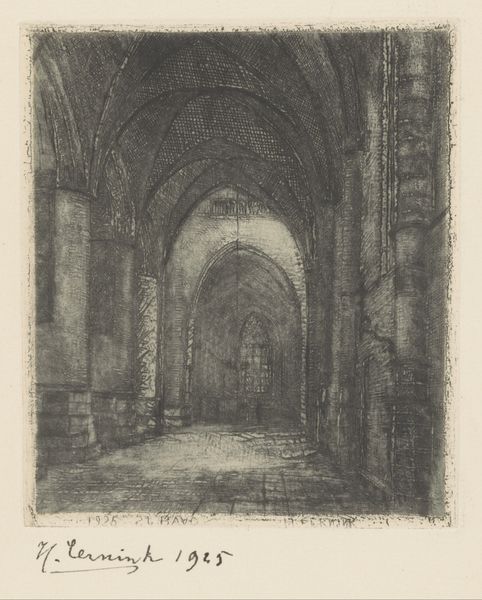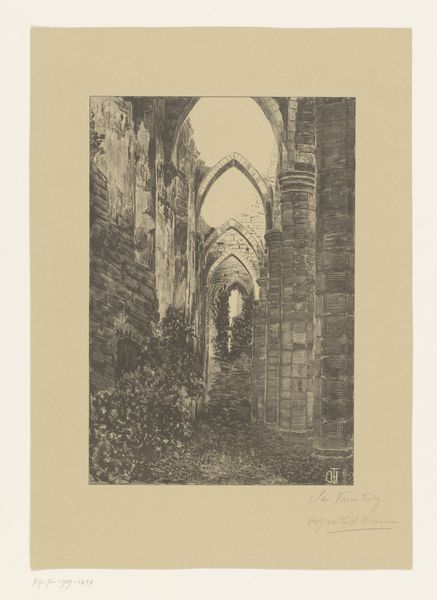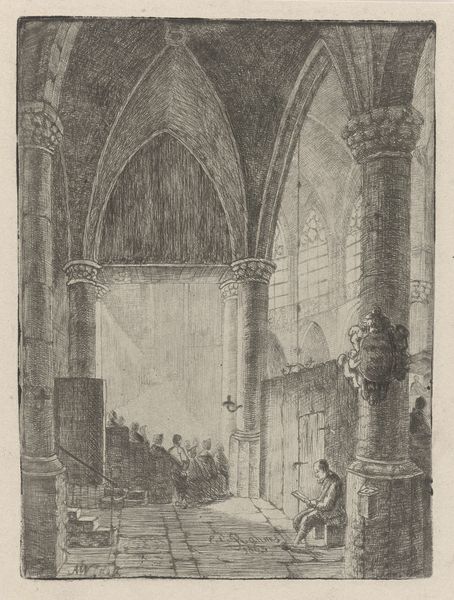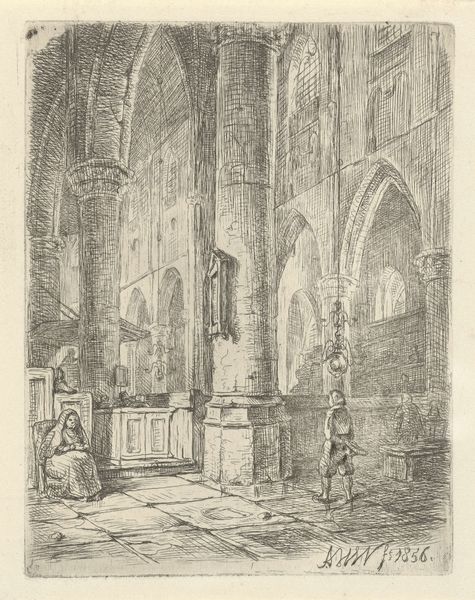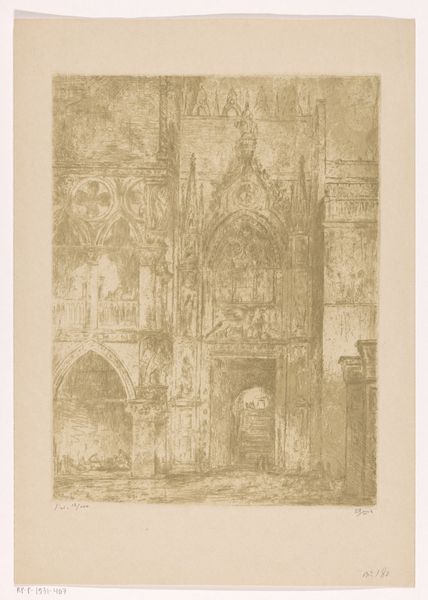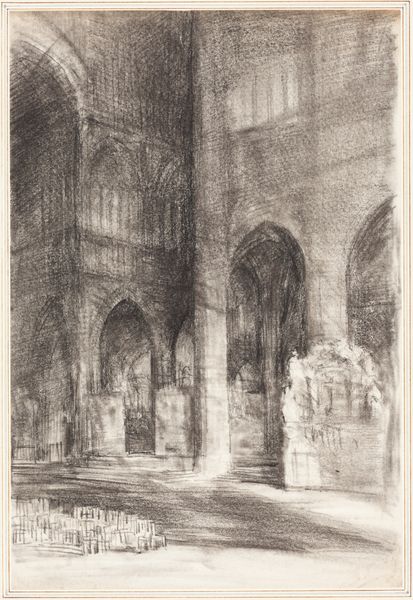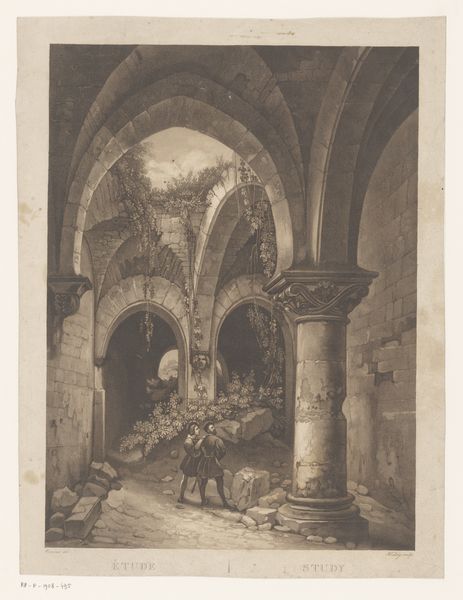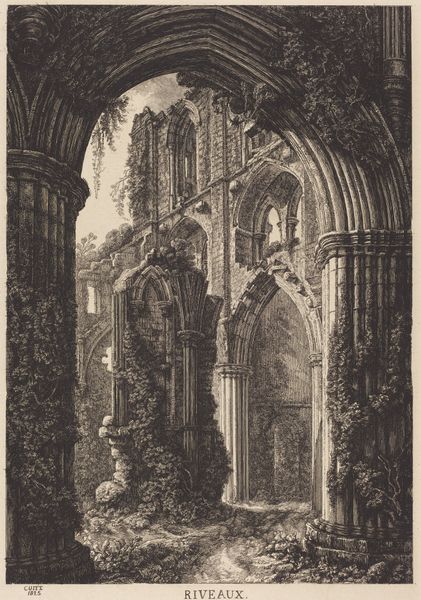
Ruïne van San Karin op Visby 1864 - 1909
0:00
0:00
corneliachristinajohannavantrigthoevenaar
Rijksmuseum
drawing, pencil, architecture
#
pencil drawn
#
drawing
#
aged paper
#
light pencil work
#
pale palette
#
pencil sketch
#
landscape
#
pencil
#
line
#
pencil work
#
northern-renaissance
#
architecture
#
realism
Dimensions: height 424 mm, width 298 mm
Copyright: Rijks Museum: Open Domain
Editor: Here we have Cornelia Christina Johanna van Trigt-Hoevenaar's pencil drawing, "Ruïne van San Karin op Visby," created sometime between 1864 and 1909. It's such a delicate rendering of the ruin; there's almost a melancholic quality to how nature is reclaiming the stone. What do you see in this piece? Curator: It's interesting you picked up on the melancholic tone. Looking at the ruin, we must also consider the forces that led to its abandonment and decay, the power structures, societal shifts, and perhaps even ecological factors. The reclaiming by nature isn't passive; it's an active process, a challenge to the original human imposition on the landscape. Editor: So, it’s not just a pretty picture of some old stones. Curator: Exactly! The ruin speaks of loss, but also of resilience. Who built it, and who benefited from its existence? How might the labor have been extracted? Where are the people in this picture, or rather, where *aren’t* they? It demands that we question whose histories are prioritized and remembered. Think about the concept of "landscape as palimpsest," with each layer of history writing over the last. Editor: That’s fascinating. The “landscape as palimpsest” idea completely reframes how I see the drawing now. Curator: Right? The artist's delicate rendering, the "pale palette," almost romanticizes the ruin, perhaps obscuring some of these harder questions. We need to consider whose gaze is framing this view and for what purpose. Who has the luxury of calmly sketching a ruin while others may have experienced it as violence, erasure, or oppression? Editor: I didn't think a simple drawing of a ruin could raise so many points about identity, race, and power. Curator: Art can always offer a space to examine difficult conversations. I hope others are similarly inspired.
Comments
No comments
Be the first to comment and join the conversation on the ultimate creative platform.

